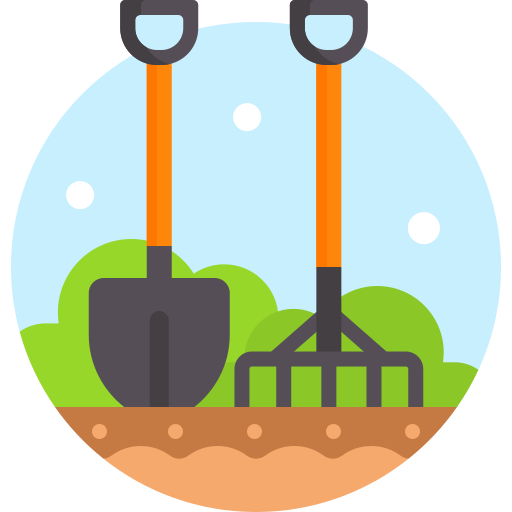Check out Honey Dijon and State of Grace too! Both stunners.
- 2 Posts
- 177 Comments
I am a rose snob too, haha. I only have so much space that only the prettiest survive!
I’m obsessed!! I’ve never seen quite this shade.
I know some farmers who have done this - basically they used a mesh bag when the petals fell off, and allowed the seeds to dry on the plant. (This is also how most commercial seed production happens, too.) I’m not sure what varieties are good for eating. But the general consensus among friends was that it was “more trouble than it’s worth.” Keep in mind, this is coming from tired end-of-season farmers :)

 2·5 个月前
2·5 个月前I know!! But yes, worth the wait. If you are in the US, you may be able to snag some tail-end season peonies from your local farmers or Trader Joe’s. Or order some from Alaska! I like Scenic Place Peonies for cuts :)
Not me growing foxglove and hellebores like I’m trying to kill Socrates again 😅

 7·5 个月前
7·5 个月前Yes! She’s doing great! Typically the first year (or couple years) you’ll only get 1-2 stems from the ground, but it will increase over the years. One suggestion would be to remove some of the grass/etc in the vicinity - peonies like their space and will need the water/nutrients to thrive. For reference, typical farm spacing is recommended 4ft apart. Another tip is to disbud any buds the first two years. Just pop them off as soon as you see them form. This will help your new peonies put energy into leaves and roots for a healthier plant. You can then allow them to bloom in year 3.

 12·5 个月前
12·5 个月前I’ve definitely noticed. When I was a kid in the South, lovebug season was a whole thing. I got drafted to wash the car constantly. Last time I was down there during lovebug season driving around, I didn’t see a single one. No splats, no scraping bugs out of the grill, nothing. No fireflies either. It is depressing. I’m a city girl now, but I still keep a densely planted organic flower garden. Even with huge patches of native flowers, I see very few pollinators, and it really bums me out. But I do often see bees sleeping in my flowers, so there’s that.

 3·6 个月前
3·6 个月前The apps are really cool though! Just not perfect. And yeah, the fun thing about plants is that there is always someone who knows wayyyyyyy more than you about any given plant, and there’s always more to learn! Like I couldn’t tell you much more about pansy breeding programs or genetic selections but I guarantee you there’s like 5 PhD level pansy nerds somewhere on earth who could :)

 10·6 个月前
10·6 个月前No, everyone in this thread is correct about foliage, bloom structure, petal count, etc. I never know how much info to give with plant ID corrections without coming off as an arrogant plant nerd, lol. But as a former flower farmer and florist - and knowing you like the info! - yes, those are pansies. They are not violas (although all pansies descend from violas) because they are orange; violas only appear in blue, white, purple, and yellow. Additionally, pansies have been bred for bicolor and streaky appearance which these seem to have. You will notice pansy/viola foliage is compact, low, with oblong leaves. They are prolific volunteers so look forward to more!

 17·6 个月前
17·6 个月前Those look like pansies! Very cold hardy cuties :)
Brining chicken for salads! I eat a salad every day for lunch, which sounds boring. But if you brine your chicken breasts in a salt solution for about an hour before baking, it gives you amazing salad chicken, like you’d get in a restaurant. Just pat dry, brush with olive oil, season with your vibe of the week, and bake for like 45 minutes. Then you can mix up what else you put on your salad greens - different nuts, cheeses, veggies, dried and fresh fruits, etc. I also eat pretty seasonally/locally so salads change with the seasons. But in general, brining meat is a game changing kitchen hack that few people take the time to do.
I am a flower freak, so I would just plant a ton of hellebores. That is what I’ve done with a very shady spot in my backyard, and now I have hundreds of blooms I can cut from and bring inside from January to April. They are never going to be super tall, but they are massive now! I also have hydrangeas (including oak leaf, which give pretty autumn foliage), astilbe, heuchera, sanguisorba, ferns, and rhododendrons in shade, as others have mentioned.
You may know this already, but mints, raspberries/blackberries, and lemon balm will completely take over a space over time. You are probably okay for this year since it’s a new planting, but I would highly recommend repotting it at the end of the season into a separate, contained pot. It can still hang out near your bed and provide some pest management! Just best to keep it separate so you’re not pulling it up constantly.

 4·7 个月前
4·7 个月前Buying seeds is always an exercise in optimism! There’s always next year…
Ha. Anyone who’s farmed knows that ag leases are such a different scenario and very negotiable, especially if you are working with someone who wants to see the land in production or help young farmers etc. I WISH there had been more willing landlords when I was farming, it took me two years to find a place at all. Lemmings can hate once they’ve negotiated their own ag lease 👀 👩🏻🌾
For now? Lease as much of that land as you can. Cover crop the rest. You do not want bare, tilled soil sitting there for a year+ as you figure out bigger plans.






It’s also that there are a LOT of elderly people living there, many of whom should not be driving. Combined with a lot of immigrants and poor people who are walking or biking, and the hostile pedestrian infrastructure / car-centric sprawl and culture, it’s a recipe for disaster. (The wealth inequality down there is next level.) We were once in a car accident when visiting family there because some woman just backed into oncoming traffic (us). That’s the level of situational awareness for over half the drivers down there, 100% of the time. It’s harrowing Mad Max shit in a car, let alone as a pedestrian or biker. I’m sad my family member passed away, but so relieved I never have to go back to South Florida ever again.